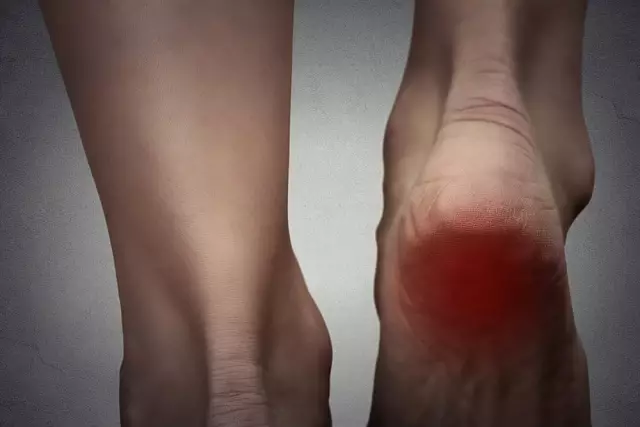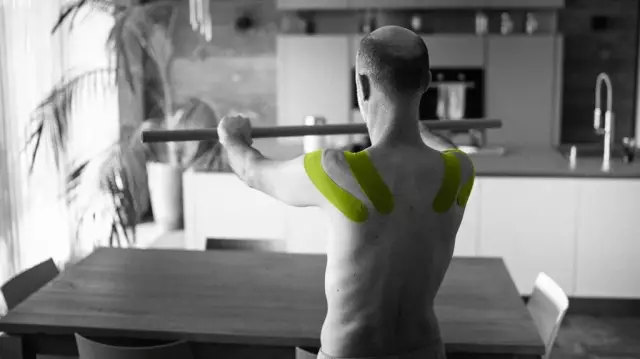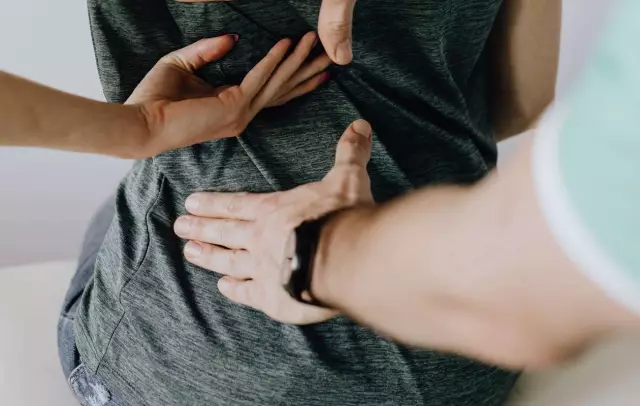- Author Rachel Wainwright [email protected].
- Public 2023-12-15 07:39.
- Last modified 2025-11-02 20:14.
Bursitis

Disease bursitis is an acute or chronic periarticular inflammation of the mucous membranes of the synovial bag. As a rule, bursitis occurs as a result of an infectious inflammatory process, or as a result of traumatic effects on the joint (therefore, joint bursitis is often diagnosed in athletes and people leading a fairly active and mobile healthy lifestyle).
Types of bursitis
According to the site of localization of inflammation, the following types of bursitis of the joints are distinguished:
1. Bursitis of the elbow
In most clinical cases, bursitis of the elbow joint is a consequence of mechanical (traumatic) effects on the joint, followed by infection. As a result of the injury, the elbow joint capsule significantly increases in size, a hemispherical swelling forms in the elbow bend area. Secondary accession of the infection causes an increase in the general and local temperature, localized redness of the skin over the injured area, sharp soreness and limited movement of the joint affected by inflammation.
2. Bursitis of the shoulder joint
The most common type of disease is bursitis of the shoulder joint. A characteristic feature of this type of bursitis is the defeat of the periarticular bursae that are not directly related to the joint cavity (subdeltoid, subcutaneous acromial, subacromial). The area of injury in bursitis of the shoulder joint has an extreme degree of pain, which is greatly aggravated by attempts to abduct or rotate the injured upper limb.
3. Bursitis of the hip joint
This type of bursitis is characterized by an extremely severe course of the disease. A common complication of bursitis of the hip joint is the addition of a secondary purulent infection, which subsequently covers the entire joint. The hip joint is extremely painful, is constantly bent and slightly turned outward, so the patient is limited in movement when walking.
4. Bursitis of the knee
With bursitis of the knee joint, the pre- and patellar bags that do not communicate directly with the knee joint (subcutaneous, tendinous and subfascial) are most often affected. Bursitis of the knee joint is acute, with pronounced local edema, fluctuations, an increase in body temperature, often there is a significant increase in regional lymph nodes.
5. Bursitis of the ankle
A common type is bursitis of the ankle joint located between the calcaneal tendon and the heel, the so-called achillobursitis. In most cases, ankle bursitis occurs due to the traumatic effect on the synovial bursa with inappropriate shoes. When diagnosing ankle bursitis, it is necessary to distinguish it from inflammation caused by a heel spur.
Bursitis symptoms
The most common symptoms of bursitis are:
- limitation of mobility in the joint area;
- soreness;
- elastic elastic swelling in the joint area (of various sizes);
- sometimes there is an increase in local and general body temperature;
- redness of the skin in the area of the inflamed joint;
- in the case of chronic bursitis, all of the above symptoms of the disease may be unclear.
Diagnosis of bursitis
Diagnosis of bursitis, especially superficial bursitis, does not cause any particular difficulties. If it is necessary to differentiate bursitis from other joint diseases, the patient is assigned additional instrumental examinations - ultrasound or radiography of the joint. Another method for diagnosing bursitis is puncture of the affected articular bag for immunological and bacteriological examination of its contents.
Bursitis treatment

For acute bursitis, treatment should be carried out in a hospital setting. The usual tactic of patient management is the appointment of bed rest, a pressure bandage is applied to the area of the inflamed joint. Rest, as a rule, is indicated for a period not exceeding ten days, then light physical exercises (flexion-extensor) are prescribed to maintain joint mobility.
Also, anti-inflammatory drug therapy is prescribed, when it comes to bursitis of infectious etiology, antibiotics are used.
In some cases, folk remedies are very effective for resolving the inflammatory focus of chronic bursitis. The use of the following absorbable compress can be recommended:
- laundry soap (1 tablespoon, grated);
- honey (1 tablespoon);
- onions (1 tablespoon, grated).
Prepare a mixture of the above ingredients, take a piece of polyethylene that is suitable for the size, lay a clean cotton cloth on top of it, on which the prepared mass is laid out. Then apply a compress to the area of the inflamed joint and wrap it on top with a warm, preferably pure wool, cloth.
The best result in the treatment of bursitis can be achieved by applying this compress every day for 7 days. Before starting the treatment of bursitis with folk remedies, you need to consult your doctor.
YouTube video related to the article:
The information is generalized and provided for informational purposes only. At the first sign of illness, see your doctor. Self-medication is hazardous to health!






